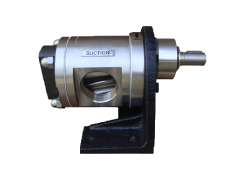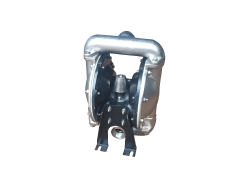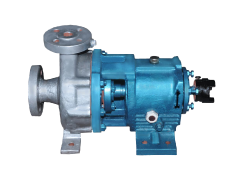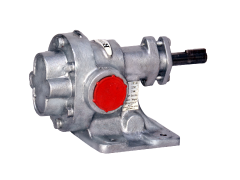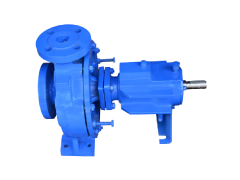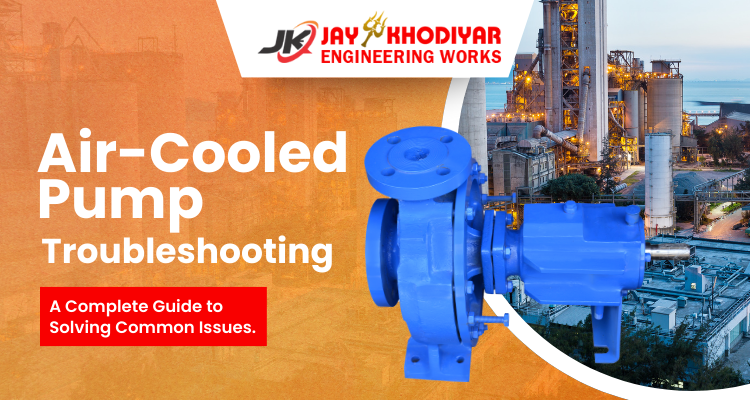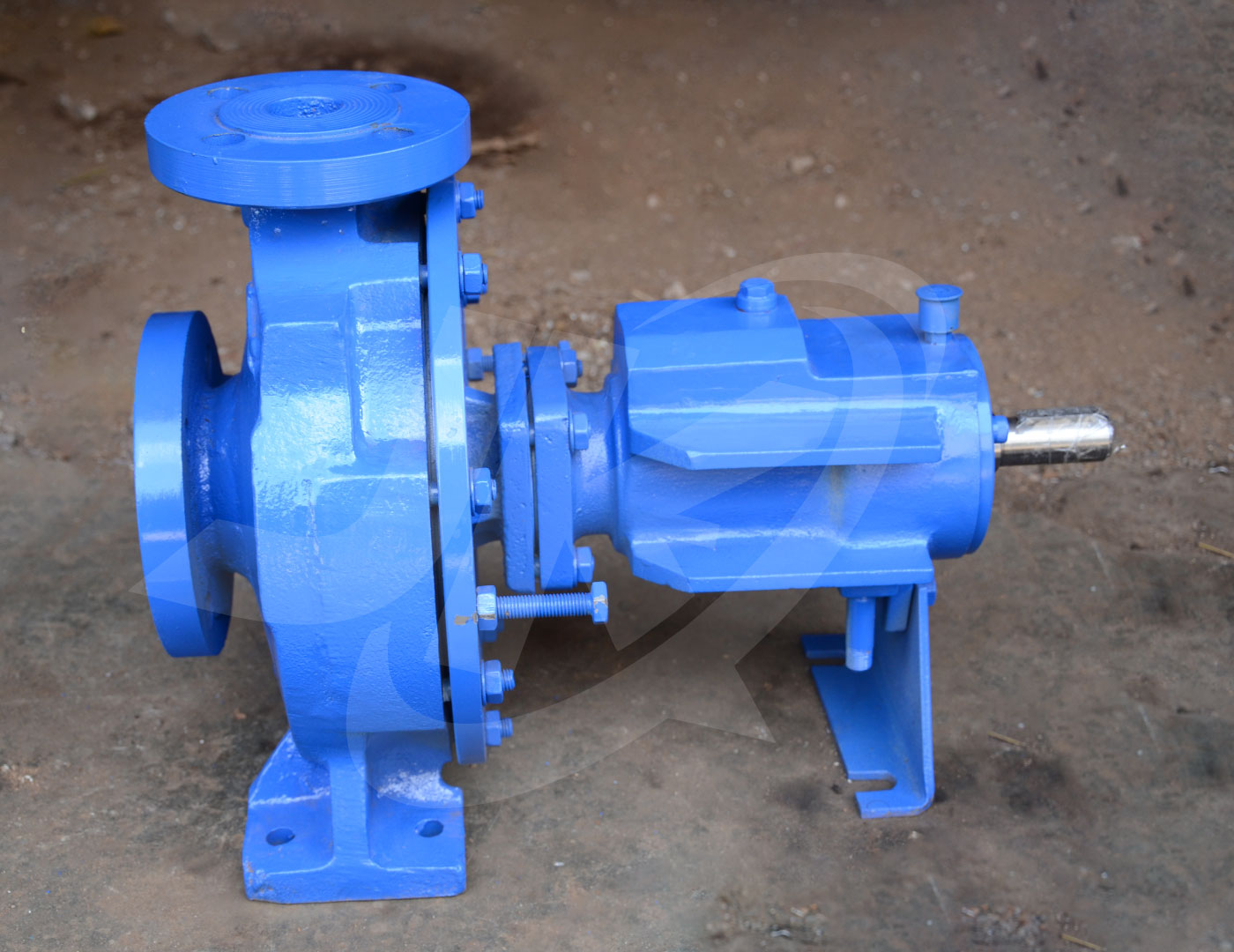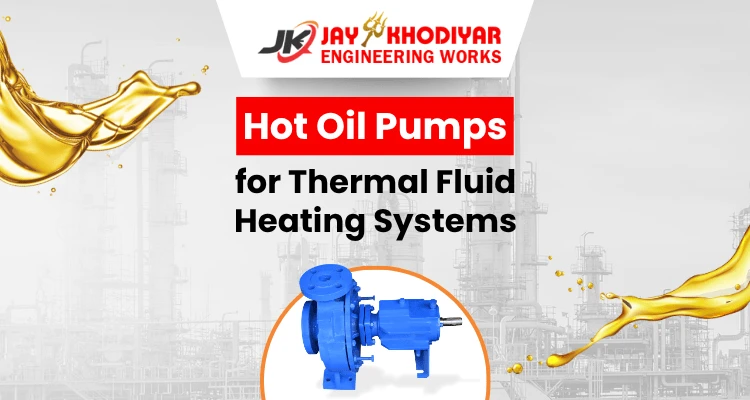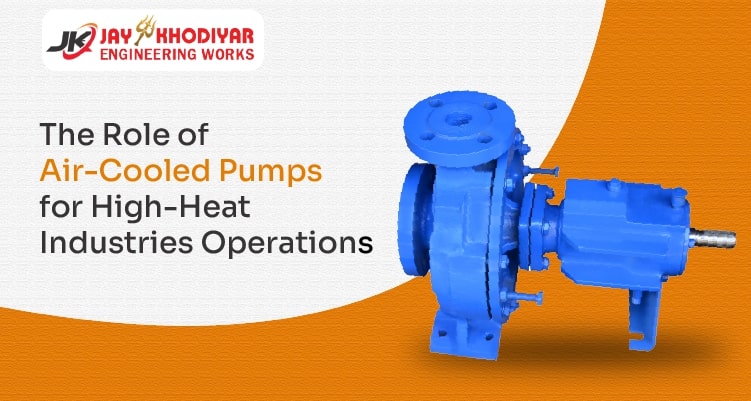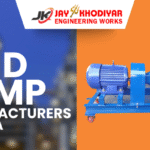
Top Mud Pump Manufacturers in India
October 1, 2025Introduction
Air-cooled pumps are important in industries where water is scarce or temperatures run high. They power operations in power plants, chemical facilities, and oil refineries. These pumps work hard in tough conditions.
But like any machine, they can break down. When they do, production stops. Costs rise. Your team scrambles for solutions.
At Jay Khodiyar Pumps, we build air-cooled pumps for the toughest jobs. We've served industries for over 20 years. We know what goes wrong and how to fix it fast.
This guide covers the most common air-cooled pump problems. You'll learn what causes them and how to solve them. Let's get your pumps running smoothly again.
Why Do Air-Cooled Pumps Fail?
Air-cooled pumps work differently than water-cooled ones. They use air instead of water to stay cool. This makes them special. But it also creates unique problems.
The main issues come from poor airflow, heat stress, and worn parts. Dust builds up. Temperatures spike. Parts wear out faster than expected.
Your environment plays a big role too. Hot weather, dirty air, and poor ventilation make things worse. The good news? You can spot warning signs early. This prevents major breakdowns.
Problem 1: How Do You Fix Pump Overheating?
Overheating is the #1 problem with air-cooled pumps. When your pump gets too hot, everything suffers. Seals fail. Bearings wear out. Performance drops.
Watch for these signs:
- The pump feels too hot to touch
- You smell burning or see smoke
- The pump shuts down on its own
- Flow rate drops suddenly
- Pressure readings fall below normal
What's causing the heat?
Poor airflow tops the list. Cooling fins get clogged with dust and debris. The pump can't shed heat properly. Solution? Clean the fins regularly with compressed air. Make it part of your weekly routine.
Check your cooling fans. Are they spinning at full speed? Inspect the blades. Replace damaged or bent ones immediately.
Ambient temperature matters. If your facility runs hot, your pump feels it. Check if the pump can handle your actual temperatures. You might need extra cooling fans. Or move the pump to a cooler spot.
Internal friction creates heat too. Worn bearings grind and generate excess heat. Listen for grinding sounds. Feel for vibrations. Replace bearings as soon as you notice problems.
Quick fix tip: Install temperature sensors with alarms. Set them 10-15°C below the maximum rating. You'll catch problems before damage occurs.
Problem 2: What Causes Pump Vibration?
Vibration means trouble. It wears out parts faster. It loosens connections. Left unchecked, it leads to complete failure.
Finding the source:
Check your foundation first. Is the base level and solid? Are anchor bolts tight? Loose bolts cause major vibration. Tighten them to spec. Look for cracks in the grout under the base.
Impeller balance is critical. Erosion and corrosion throw impellers off balance. Remove and inspect yours. Get it professionally balanced if needed.
Misalignment causes constant vibration. The pump and motor must line up perfectly. Use alignment tools to check. Remember: heat changes alignment. Check it when the pump is warm.
Cavitation makes pumps shake and rattle. It sounds like gravel flowing through the pump. Fix it by improving suction conditions. Check for air leaks in suction lines. Make sure pipes are sized correctly.
Problem 3: How Do You Fix Seal Leaks?
Seal leaks are serious. They waste product. They create safety hazards. They signal bigger problems ahead.
Why seals fail:
Heat cycling stresses seals. Air-cooled pumps heat up and cool down more than water-cooled types. This constant expansion and contraction wears seals quickly. Choose seal materials that handle temperature swings.
Dry running kills seals instantly. Always prime your pump fully before starting. Never run it dry. Install protection systems that shut down the pump if suction pressure drops.
Chemical attack damages seals. Some fluids eat away at seal materials. Check compatibility charts. Upgrade to tougher materials when needed. Fluoroelastomer seals resist most chemicals.
Keep seals maintained:
Check the seal flush system often. It supplies clean, cool fluid to seal faces. Monitor pressure and flow. Replace seal cartridges completely, not just individual parts.
Problem 4: What If Flow Rate Drops?
Low flow affects production targets. It wastes energy. It signals developing problems in your system.
Check the system first:
Valves cause simple flow problems. Walk your system. Make sure all valves are fully open. Check control valves. Verify they're responding correctly.
Clogged filters restrict flow silently. Monitor pressure drop across filters and strainers. Clean them based on actual fouling rates. Install pressure switches for automatic alerts.
Fluid changes affect performance. Has your fluid become thicker? Is there air in it? Are solids present? Compare current conditions to design specs. You may need a different pump design.
Look inside the pump:
Worn impellers lose efficiency. Measure impeller diameter. Compare it to new specs. Replace when wear exceeds 5-10% of original size.
Worn wear rings leak internally. Fluid bypasses the impeller instead of flowing out. Measure clearances. Replace rings when they're out of spec. Use harder materials in abrasive services.
Problem 5: How Do You Stop Unusual Noises?
Strange noises mean something's wrong. The sooner you identify them; the less damage occurs.. Here’s why our pumps are the preferred choice for the textile industry:
- Proven Track Record: Our pumps have been used successfully in a variety of industries, including textiles, where performance and durability are paramount.
- Innovative Design: We combine advanced engineering with robust construction to deliver pumps that excel in high-demand applications.
- Customization at Its Best: Every textile process is unique. Our pumps can be customized to perfectly match your operational needs—whether you require specific materials, sizes, or impeller configurations.
- After-Sales Support: Our dedicated team offers comprehensive support, from installation to maintenance, ensuring that you receive the best possible service.
- Cost Efficiency: Lower operational and maintenance costs translate to higher profitability for your textile business.
Prevent Problems Before They Start
The best troubleshooting is prevention. Good maintenance stops most problems before they happen.
Daily checks (5 minutes):
- Record temperature, pressure, and flow
- Listen for new sounds
- Look for leaks
- Confirm fans are spinning
Weekly tasks (15 minutes):
- Clean cooling fins and fan blades
- Check oil levels
- Inspect couplings
- Review performance trends
Monthly inspections (1 hour):
- Measure vibration with instruments
- Check motor current draw
- Inspect electrical connections
- Document all findings
Quarterly services (half day):
- Verify alignment precisely
- Replace scheduled parts
- Conduct thermal surveys
- Update maintenance records
When to Call Experts for Help
Some problems need expert help. Know when to bring in specialists.
1. Complex vibration analysis requires special equipment and training. Professionals use frequency analysis to find hidden problems. They spot bearing defects and resonance issues you might miss.
2. Seal selection for difficult services benefits from engineering support. Chemical compatibility and thermal management need detailed analysis. Manufacturers provide this expertise.
3. Performance testing gives definitive answers. When troubleshooting doesn't work, testing reveals the truth. Professionals use calibrated instruments and standard procedures.
Conclusion: Keep Your Pumps Running Strong
Air-cooled pump troubleshooting is part science, part experience. Understanding common failures helps you act quickly. Regular maintenance prevents most problems.
By following this guide, you'll reduce downtime. You'll extend equipment life. Your operations will run more smoothly.
At Jay Khodiyar Pumps, we design pumps for reliability. Our air-cooled models handle the toughest jobs. They work in power plants, chemical facilities, and high-temperature operations. They perform where others fail.
We bring 20+ years of manufacturing experience to every pump. Our technical team knows these machines inside and out. We're here to help you maintain peak performance.







